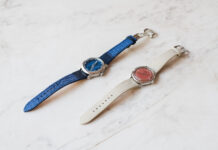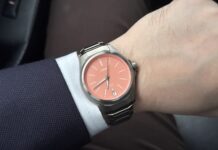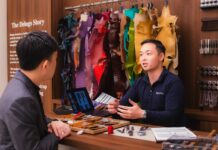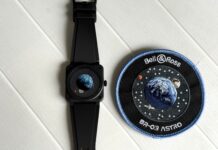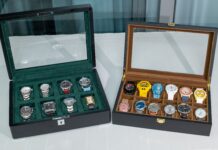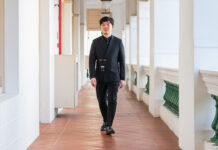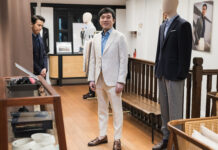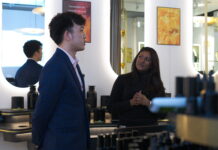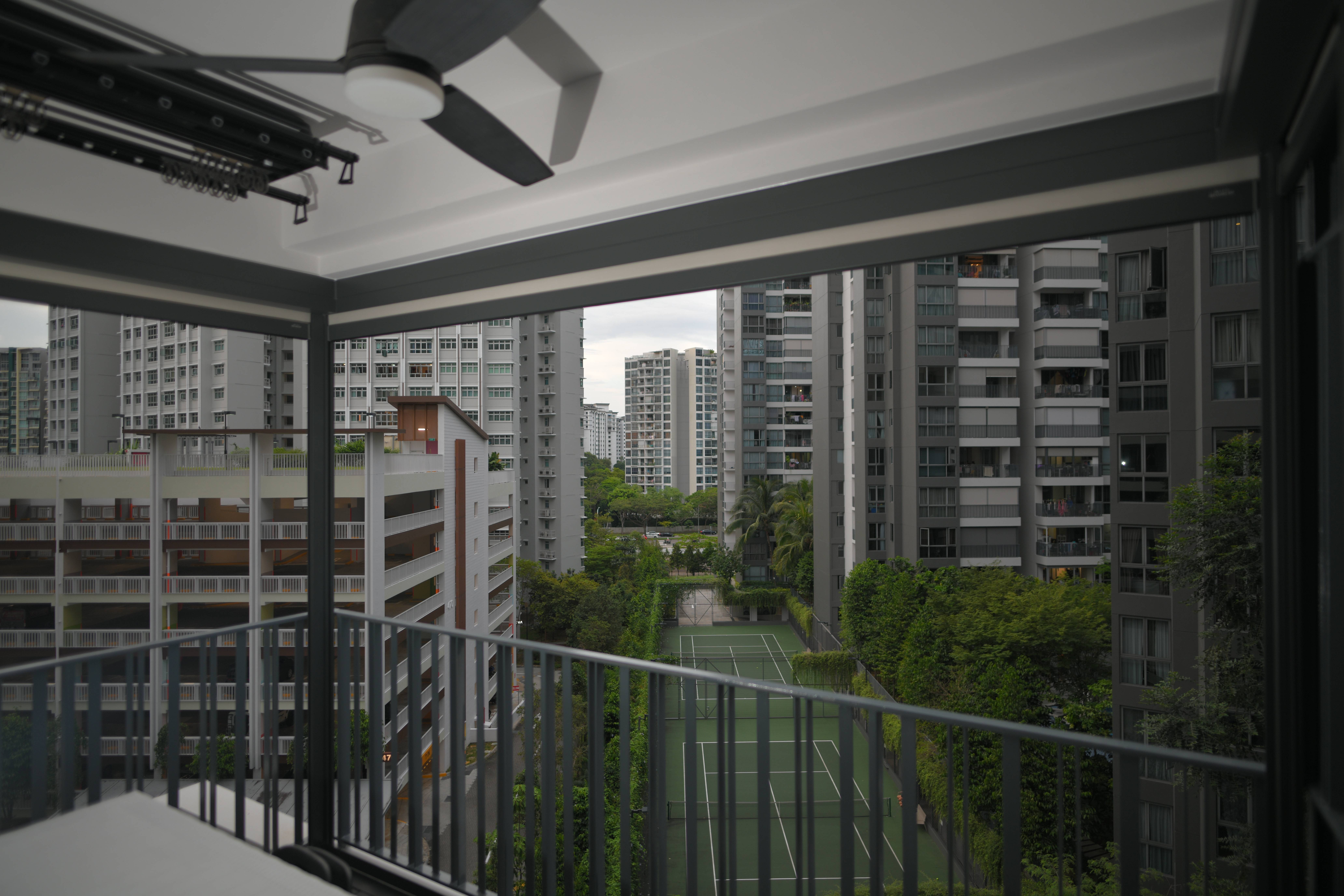Hello everyone, and welcome to another Singaporean review! To cap off 2018, I’ll be reviewing the fit and craftsmanship of the suit I got from Meiko Tailor.
If you haven’t already done so, do read my Part 1 of the review here, whereby I chronicle what it was like to commission a suit and shirt from Meiko Tailor.
Without further ado, let’s get into the fit! Do note – all below photos are unedited, and taken with natural lighting. What you see is what it looks like in real life.
Update: I’m pleased to offer curated tailoring packages from Meiko Tailor on The Shiok Shop. If you’re looking for bang-for-buck deals, do check out the webstore.
Meiko Tailor – the Fit
As I’ve mentioned in my previous tailoring review, a basted fitting does not guarantee a good fit. Having a basted fitting process is only half the work done – it’s up to the experience of the tailor to be able to discern the problematic areas, and thereafter embark upon the necessary procedures required to fix them. As such, the expertise of the tailor overseeing the basted fitting process matters a great deal.
Let’s start with the front. I’m glad to say that Meiko Tailor nailed the shoulders on this maroon double-breasted suit! The shoulders are perhaps the most important aspect of the fit – bad-fitting shoulders are usually either near-impossible or extremely costly to fix. When one looks at a suit, it is to the shoulders that our eyes are most often drawn to. As such, properly fitted shoulders are often half the battle won. Here, one can see that the shoulders lie perfectly flat, without a single hint of creasing or wrinkles. That’s pretty impressive, considering that I have differently sloped shoulders! Elsewhere, I could button the suit without it feeling constricting – it’s neither too tight, nor too loose. Furthermore, I have to say that the waist is beautifully tapered here, as the suit drapes wonderfully along the contours of my body. This creates a slight slimming effect, and is particularly important on double-breasted suits which, if tailored incorrectly, can often look “boxy” on one’s figure. The jacket length is a little on the short side, but it is still acceptable to me as the jacket ends near the middle of my palm (as shown in the photo above).
The sleeves on the Meiko Tailor suit is probably the best fitting out of all the suits I have thus far. It drapes clean, without much wrinkling throughout the entire length of the sleeve. Firstly, this indicates that the shoulders are indeed fitted perfectly. With shoulders that are too large, one would see shoulder divots – that is not the case here. Secondly, the lack of “twisting”, or spiralled wrinkles, indicates that Meiko Tailor nailed the sleeve pitch here. The sleeve pitch is one of the hardest aspects of the fit to nail as it depends on the client’s natural stance and posture – and these (unlike other aspects of the fit) cannot be measured with tape and recorded down in numbers. Thomas Mahon, one of Saville Row’s most prominent tailors, once said: “…even after all the diligence of checking again and again, things can go wrong, and pitch is often where disaster strikes.” Lastly, the lack of wrinkles also indicates that the sleeves are of the correct width – they are neither too tight, nor too loose throughout the entirety of the arm. The sleeve length is just right as well, ending just right around my wristbone. Unfortunately, the dress shirt underneath was cut a tad too short, and thus we don’t see the “half-inch of cuff” showing. Elsewhere, one can see that the jacket collar is perfectly fitted as well – it rests upon the shirt collar nicely, and there isn’t a significant gap in between.
The back of the suit fits decently, with the tapering of the waist obvious in the photo above. There are slight wrinkles around the armholes – these are due to the presence of excess fabric, which is there to aid mobility in arm movements. As such, I’m fine with those. Unfortunately, there remain visible wrinkles at the arch of my back, caused by excess fabric. As I mentioned in the first part of this article, I have a significantly concave back, which often results in the presence of wrinkles. Amongst all the suits that I’ve done thus far, no tailors were able to get a perfectly clean back. (If you’re a tailor and you’re reading this, and think you can get it done, feel free to contact me.)
We went for a quarter break look on the pants, and the length of the pants turned out quite well! I like my pants to just touch the tip of my dress shoes, and in that regard, I think Meiko Tailor did great. However, the dress pants don’t drape as cleanly as I perhaps would have wanted it to, with visible wrinkles on the bottom half of the pants.
I’m pleased to report that the shirt fits great as well. In particular, I find that the shoulders fit terrifically, giving off the impression that I have broader shoulders than I actually do. Again, given the fact that I have significantly sloped shoulders (as seen above), this is not easy to nail, so kudos to Meiko Tailor on that part! The wrinkles that one see on the forearm is again due to excess fabric, which is there to provide greater mobility. As such, I’m fine with the wrinkles. In addition, Egyptian cotton shirts have a tendency to wrinkle easily due to the softness of the material.
Overall, I’m pleased with the fit of the suit I commissioned from Meiko Tailor. I think it’s probably my best fitting suit thus far! In particular, I think they did a great job on the shoulders, the tapering of the waist, and the sleeves – arguably the most important aspects of fit. However, this being an honest review, I have to admit that the fit isn’t perfect – there remains wrinkles on the back, as well as the lower portion of the pants. Nevertheless, for the price, I think they did a commendable job all in all.
Meiko Tailor – the Craftsmanship
While the fit of the suit is obviously important, one should pay heed to the craftsmanship of the suit as well! As mentioned in the first part of this article, tailoring is an artisanal craft – and it is in the craftsmanship of a suit that one sees the joyful little details.
Firstly, all suits from Meiko Tailor are fully canvassed by hand. How do you tell a canvassed suit? Aside from the lapel roll, a key indicator of a hand canvassed suit would be the presence of visible stitches (or “dimples”) on the underside of the lapel. This is probably the key difference between a cheaper made-to-measure tailor and a bespoke tailor – the level of craftsmanship involved. In cheaper, “canvassed suits”, one probably would not see such stitches behind the lapel, indicating that either the suit isn’t hand canvassed, or perhaps isn’t even canvassed at all.
Secondly, as the suit from Meiko Tailor is fully canvassed by hand, one sees a beautiful lapel roll here (though it is less obvious on a double-breasted suit). On cheaper, non-canvassed suits, the lapels will look flat, almost ironed on – lacking dimension and style. If you see a beautiful lapel roll on a suit, chances are, that’s a well-made suit.
Thirdly, all great handmade suits should come with pic stitching around the edges of the lapel. While pic stitching serves mainly an aesthetic purpose, the presence of pic stitching shows an attention to detail and craftsmanship. Often, pic stitching is done by hand, and thus the stitches can be slightly imperfect and inconsistent – but that’s the beauty of something that’s handcrafted!
On bespoke suits, the buttons are often shanked, which provides the fabric space to drape in when buttoned. It is also more durable, which should mean that you don’t have to worry about your button dropping off! Here, the buttons used on the suit are genuine horn. Genuine horn buttons, as compared to cheaper plastic “faux-horn” ones, possesses a greater richness, and a unique look – no two genuine buttons look the same. Elsewhere, one can see in the photo above that the pic stitching extends to even the pockets of the suit, which is a nice touch and speaks volumes about the craftsmanship of Meiko Tailor.
In addition, the sleeve buttonholes on bespoke suits should always be functional. (I forgot to unbutton the last button in the photo above, but rest assured those are functional buttons.) While surgeon cuffs serve little functional purposes, like pic stitching it is often a sign of a well-made suit, showing an attention to detail and craftsmanship.
Lastly, the collar on bespoke suits is often hand-set, as seen in the photo above. We see clear hand stitches at the base of the collar, as well as between the collar and the lapel. In addition, the “fold-back” piece of fabric seen above is actually seam allowance, which allows tailors to re-cut the collar after a fitting if required. This is almost always done by hand.
Meiko Tailor includes a nice little “specially-made” tag inside every one of their suits with the client’s name on it. While seemingly a small gesture, this reinforces the feeling that the garment I’m wearing is specially made for me – the raison d’etre of tailoring! In addition, Meiko Tailor utilizes acetate lining for their suits. As compared to polyester, it is more comfortable, and supposedly feels more luxurious.
Remember the dilemma I described in part 1 of the article, whereby we were deciding between brass or stainless steel buckles? I’m glad we went with brass here. Set against the rich maroon fabric, the brass really pops, and gives off a regal feel.
For the shirt buttons, we went with classic mother-of-pearl buttons. I love MOP buttons – to me, they are the epitome of subtle elegance. We also customised the button stitching, and I think the gold turned out fabulously well here! It certainly plays well into the regal feel of the suit. Meiko Tailor also decided upon a floral trim for the shirt, which I think adds a slight whimsical nature to the otherwise rather formal-looking shirt.
Lastly, customers can also opt for a monogram on their shirt cuff. I went with a simple monogramming of my initials, in the same gold stitching of the buttonholes. Again, this reinforces the feeling that what I’m wearing is custom-made for me.
Overall, I have to applaud Meiko Tailor for their craftsmanship in their suits. Things like canvas dimpling, pic stitching, shanked buttons, functional buttonholes, lapel roll and a hand-set collar may seem like small details, but added together they constitute attention to detail, and showcase the reverence for the tailoring craft that Meiko Tailor possesses. The usage of premium materials such as horn and mother-of-pearl, combined with customisable options such as monograms, makes the suit feel premium and special on the wearer.
Comparison: Meiko Tailor vs Este Bartin
A question that I often get asked is: why are bespoke tailors so expensive? A made-to-measure tailor such as Este Bartin, even with baste fitting, often cost half the price of a bespoke tailor like Meiko Tailor. What goes into the higher price-tag?

Firstly, the suits from cheaper made-to-measure tailors such as Este Bartin are often fused. In contrast, suits from bespoke tailors such as Meiko Tailor are often fully-canvassed. This means that on cheaper fused suits, one does not get the lapel roll and the canvas dimpling present on higher priced fully canvassed suits. Furthermore, there is often a higher amount of craftsmanship that goes into a bespoke suit. The hallmarks that I mentioned earlier, such as a hand-set collar, functional buttonholes, pic stitching, shanked buttons etc are often not present on lower priced suits from made-to-measure tailors such as Este Bartin. There’s a difference in the quality of material used as well – the fabric available at bespoke tailor often have a higher wool content, and premium button options such as horn and mother-of-pearl are common. In contrast, the fabric used by cheaper made-to-measure tailors often have a high polyester content, and the buttons offered are mostly plastic.
Furthermore, the fit on bespoke tailors is often better than lower-priced made to measure tailors, even if both do basted fitting. I can confidently say that the fit on my Meiko Tailor suit is better than the fit on my Este Bartin suit. The difference I believe stems from the experience of the tailors themselves – Uncle Chung from Meiko Tailor has been doing this for almost half a century, and thus was better able to identify fit issues and correct them during the basted fitting process.
Overall, bespoke tailors are often a cut above more affordable made-to-measure ones in terms of craftsmanship, materials used, and fit. Make no mistake however – I’m not bashing Este Bartin here. Is the $499 Este Bartin suit as good as the $1290 Meiko Tailor suit? No – but it shouldn’t be, at half the price! What I hope to show in this comparison is the difference between cheaper made-to-measure tailors and higher priced bespoke tailors, and where the difference in money goes to.
Conclusion: so the Meiko Tailor suit “shiok” or not?
I’m definitely pleased with the suit from Meiko Tailor. The fit – while not perfect – is good, and I appreciate the additional craftsmanship that went into this suit. Seeing aspects such as the pic stitching and hand-set collar made me appreciate the craft of tailoring even more, as it becomes apparent how painstaking the process is. I’ve no doubt that this suit will last me a long, long while.
For those interested in commissioning a suit from Meiko Tailor, the price for a fully canvassed (all suits are fully canvassed) 2 piece suit starts from $1290. Shirts start at $150 each, while pants start at $250. The usual lead time for suits is 2-4 weeks, typically with 2 fittings. Readers get to enjoy a complimentary set of cufflinks and tie with every purchase of a 2-piece suit – simply flash this post to enjoy the free accessories.
Curated package deals from Meiko Tailor can be found here. In particular, I recommend the $649 Back to Office Wardrobe package, as well as the $2380 Groom & Bride Wedding Package.
Read Part 1 of the review here, whereby I chronicled my experience of getting a suit and shirt tailored at Meiko Tailor!
P.S Do check out the new “Discounts!” page for exclusive discounts for Wahsoshiok readers! More brands will be added very soon – stay tuned!
P.S.S If you haven’t already, do follow my social media channels on Facebook here, and on Instagram here!
Meiko Tailor’s location:
PAN PACIFIC SINGAPORE
7 RAFFLES BOULEVARD UNIT 02-01
SINGAPORE 039595
TEL: +65 6334 6911

